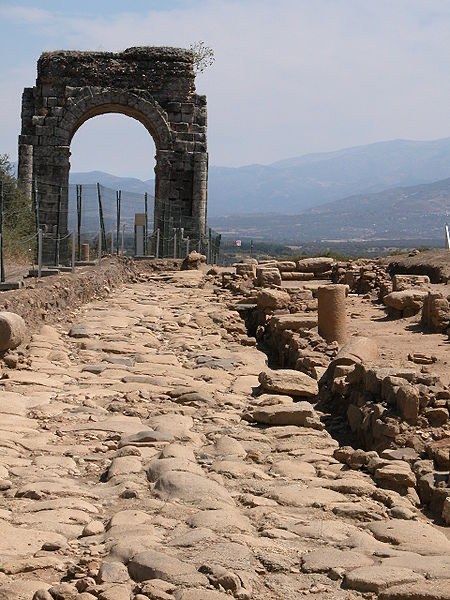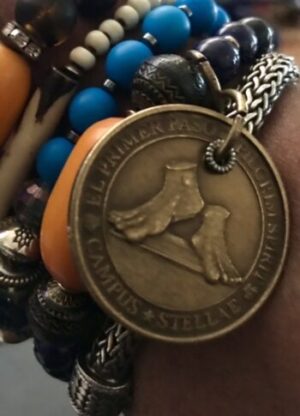Before I left home for that long walk in Spain, I revealed my thoughts and fears. My feet were not excluded from the conversation. Their sole job (no pun intended) was to carry me and my belongings 1400 kilometers across the country, up and down mountains, on paved roads, rocky trails, wet grass, through puddles and muddy grounds to my final destination: Santiago de Compostela.
A little background
Shortly after I left Almería, I developed blisters on the balls of both feet. I considered if continuing on my trek would put my life in danger. And I wondered if going forth on the journey would jeopardize my future health.
In my mind a battle raged. Was I a masochist? The pain did become unbearable at times. Just outside Almería, sharp riverbed rocks and shells were hostile to my feet and psyche. I looked down, then ahead to kilometers of potential pain. It was devastating to my soul.
In Andalusia, there were few places to stop and sit. Ironically, simply stop-standing was painful. The perceived relief of standing disappeared when I started walking again. In my shoes, I felt a sensation of my soles shearing away from my feet. The heat and sweat in my shoes made the situation unbearable. My minimal backpack, food, and water weighed me down.
Would some unknown element like sepsis stealthily snake through my body and eventually kill me on the trail?
I was not feverish or delirious, but a battle raged in my mind. How would I survive this so early on in my walking?
Finally, what repercussions would I suffer in the months after my pilgrimage? And my gait – would it change the way I walk?
Was my journey to Santiago, now just under 1400 kilometers, going to be a long, arduous prayer with my feet?
Was I willing to find out?
No life experience is ever wasted
When I was in army basic training, I developed blisters on the back of my heels from breaking in new combat boots. Never had I experienced this kind of pain. Conventional wisdom was that the problem would subside as the boots “broke in”. From where I was standing (excuse me for that), I thought that may not happen until my stint was over.
There was no sympathy. I couldn’t even complain about such an injury. I wasn’t the only trainee suffering. There were remedies like moleskin, antibiotic cream, needle pricks that I picked up from other recruits. Healing took a while because, you guessed it, I could not stop or sit down and wait for the injury to heal.
Every morning I got out of my cot, stood, marched, drilled, worked, and bivouacked like nothing was personally wrong. It was part of the training to become a stoic, resourceful soldier. I learned to protect myself and my comrades. If I wavered or stopped short in real combat, I could get myself killed.
But I lived to tell the tale.
The decision
I vowed to take care of myself on the camino trail like I did then. Purposely, I paid attention, employed a lot of self care, and held compassion for myself. I adjusted my expectations to finish the trek. In addition to reaching Santiago, my goal now was to heal.
I was always aware of the pain. Aware, also, of the risk of continuing and making my condition worse, I paid another price. I had to forgo visits to some museums and monasteries due to the extra walking that would be required.
Some, fortunately, were closed or totally booked at the time that I was near. Accommodations were not always readily available which meant walking kilometers off the camino trail. That meant retracing my steps to the trail the next morning.
The gate at Caparra near Oliva de Plasencia, the Alhambra in Granada, and the shrine to Our Lady of Guadalupe (Black Madonna) in Cáceres were stricken from my Spanish bucket list. I did stay at accommodations in or near these places such as an excellent private hotel in Oliva de Plasencia. At the foot of the Alhambra in the heart of Granada, I stayed at the Monasterio Cistersiense san Bernardo donativo albergue.
By the time I arrived at these places, it was already late and my feet were killing me. Ironically, I walked through the Caparra site twice. The night before my stay there, I paid scant attention to the gate or the grounds. It was getting late and I wanted nothing more than to find my hotel.

The next morning, I walked through Caparra again, this time focused on finding my way back to the camino and resuming my pilgrimage!
I was satisfied with the stops and visits I did make. All of the places were, in my mind, bonus features. After all, I was not a tourist, but a peregrina or pilgrim on the camino trail to Santiago. Well, that is how I consoled myself.
I continued walking, but slowly because I was not in a race against anyone but myself. My speed was faster than a crawl certainly, but I did not participate in the bed race. Usually I got to town and the albergue late but before dark. It became quite an amusing discussion point among my fellow pilgrims.
A few times, a hospitalero greeted me by saying that someone alerted her that I was behind and headed that way. That eased the fear and despair about possibly not finding a bed. I was grateful for that.
My goal, however, was to simply get there. What was there? It was any place where I could lay my head each night after a day of walking. It was where I could sit down and minister to my feet.
Questioning myself
On the camino trail, I asked myself: I waited two years for this? Yes, I waited to walk here at this moment in time, in history, and in my life. Nothing was going to stop me.
________
To be continued:
Praying With My Feet – Part 3 👣
For the backstory:
Praying With My Feet (Part 1) 👣
Shirley J ♥️
Read the rest of the stories about my pilgrimage to Santiago de Compostela, Spain: here.


2 thoughts on “👣 Praying With My Feet – Part 2”
Waiting on part 3
Haha! I won't keep you waiting. 🌹👣♥️